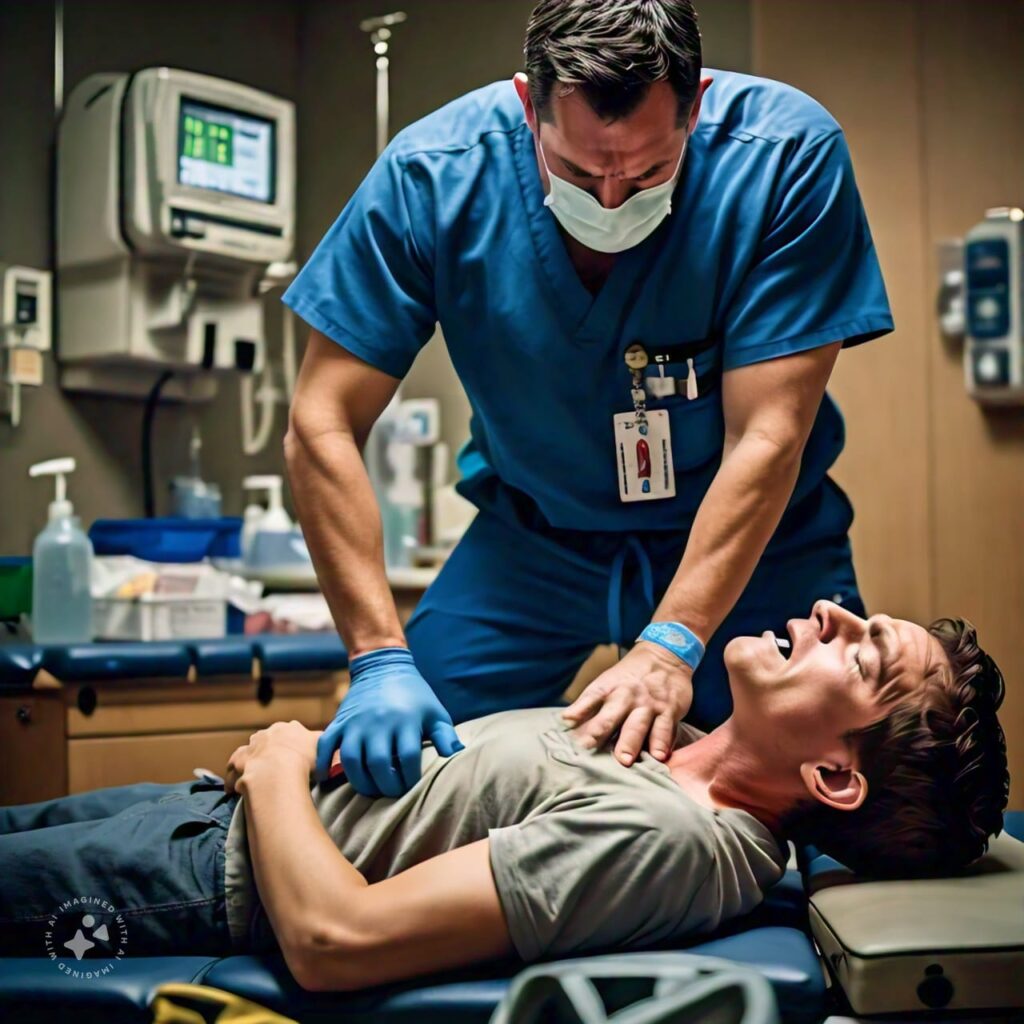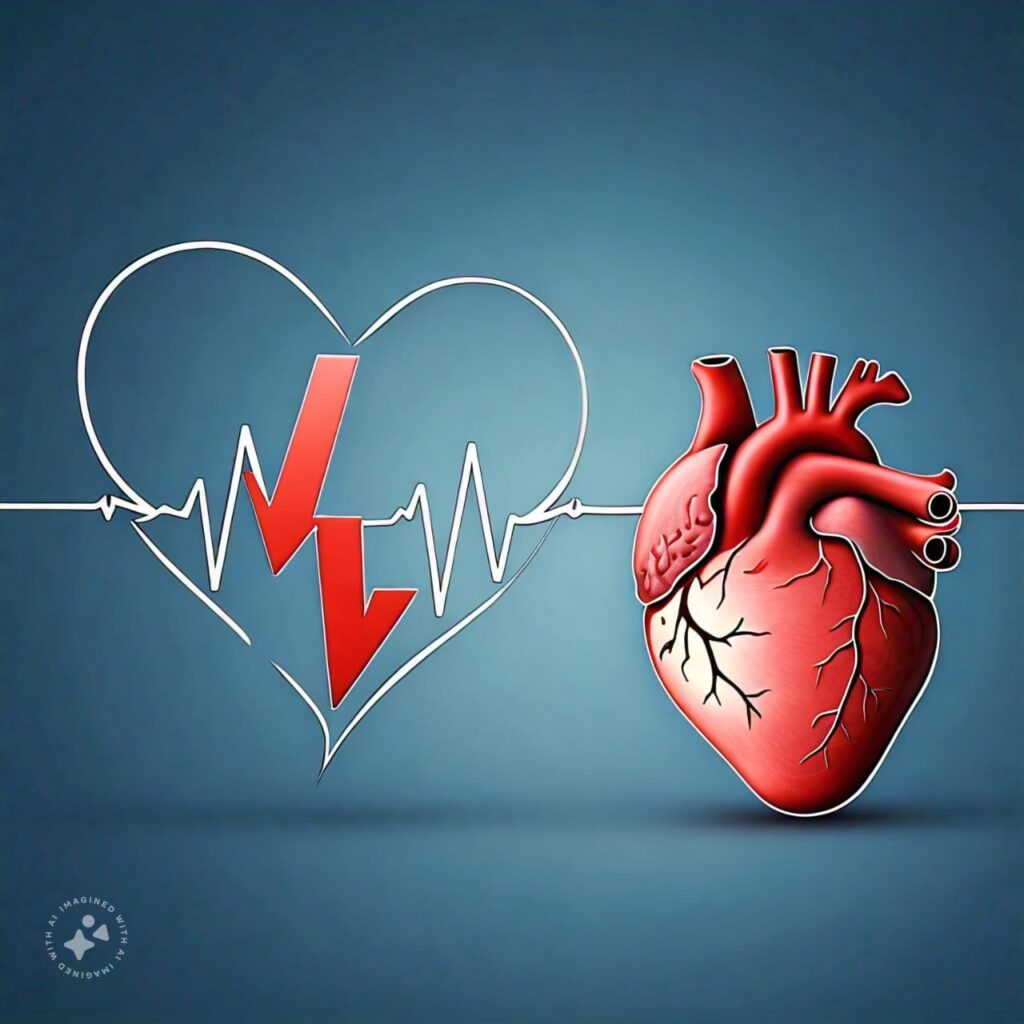Introduction
Cardiac arrest is a serious medical emergency that can happen without warning, often leading to sudden and severe consequences. It occurs when the heart unexpectedly stops pumping blood, which interrupts blood flow to the brain and other vital organs. Unlike a heart attack, which is caused by blocked blood flow to the heart, cardiac arrest is an “electrical” problem within the heart. Knowing the symptoms can help you or someone around you act quickly, potentially saving a life. In this blog, we’ll break down the symptoms of cardiac arrest in simple terms, so everyone can understand what to watch for and how to respond.
What is Cardiac Arrest?
Before we discuss symptoms, let’s clarify what cardiac arrest is. Cardiac arrest is when the heart suddenly stops beating due to a malfunction in its electrical system. This stops blood flow throughout the body and can lead to death within minutes if not treated. Unlike a heart attack (a “plumbing” problem involving blocked blood flow to the heart muscle), cardiac arrest is more like a “power outage” in the heart, often caused by abnormal heart rhythms (arrhythmias).
Key Symptoms of Cardiac Arrest

(This Image is Made by Meta AI)
In most cases, cardiac arrest symptoms appear suddenly and can be alarming. Here are the main signs to watch for:
1. Sudden Collapse
One of the most common signs of cardiac arrest is a sudden, unexpected collapse. The person may appear to faint, lose consciousness, or fall to the ground without warning. This happens because the heart has stopped pumping blood, which causes the brain to shut down quickly.
2. No Pulse
In cardiac arrest, the heart isn’t beating, so there’s no pulse. A quick check of the wrist or neck can reveal the absence of a pulse. However, only trained individuals should perform this check; attempting it without training can lead to errors.
3. No Breathing or Abnormal Breathing
A person in cardiac arrest will stop breathing or may exhibit abnormal breathing, often described as gasping or gurgling. This “agonal breathing” is a weak, irregular breathing pattern that may occur just after the collapse and is not effective for sustaining life.
4. Loss of Consciousness
Due to the lack of blood flow to the brain, the individual will lose consciousness and become unresponsive. Shaking or calling their name will have no effect if they are in cardiac arrest.
5. Weakness or Dizziness Before Collapse
In some cases, there may be a brief period of weakness, light headedness, or dizziness before the person collapses. These symptoms might only last a few seconds, so it’s important to act quickly if you observe them.
Cardiac Arrest vs. Heart Attack Symptoms
It’s easy to confuse cardiac arrest with a heart attack, but their symptoms can be quite different. A heart attack often comes with symptoms like chest pain, sweating, and shortness of breath, but it usually doesn’t cause sudden collapse or loss of consciousness. A heart attack can sometimes lead to cardiac arrest, so knowing both sets of symptoms is useful.

(This Image is Made by Meta AI)
Here’s a simple comparison:
– Heart Attack Symptoms:
Chest pain, discomfort, shortness of breath, sweating, and nausea.
– Cardiac Arrest Symptoms:
Sudden collapse, no pulse, no breathing, and loss of consciousness.
If you or someone around you experiences any combination of these symptoms, seek immediate medical attention.
Health Advisory:
This article is for informational purposes only and should not be considered medical advice. For the best guidance on heart health, symptoms, or any related concerns, please consult a qualified healthcare provider or authorized health professional. If you experience any symptoms of cardiac arrest, seek emergency medical help immediately.
What to Do If You Suspect Cardiac Arrest
If someone around you is showing signs of cardiac arrest, you need to act fast. Here’s what you should do:
1. Call Emergency Services
The first step is to call for emergency medical help. Tell them it’s a cardiac arrest, as this may change how quickly they respond.
2. Perform CPR (Cardiopulmonary Resuscitation)
If you are trained in CPR, start chest compressions immediately. Place your hands in the center of the chest and push hard and fast, aiming for about 100-120 compressions per minute. If you are not trained, the emergency operator can guide you through it over the phone.
3. Use an AED (Automated External Defibrillator) if Available
Many public places have AEDs, which are devices that deliver an electric shock to help restart the heart. Follow the device’s instructions and only use it if you are trained or feel comfortable doing so.
4. Keep Going Until Help Arrives
Continue CPR and AED use (if available) until emergency services arrive. Don’t stop, even if the person doesn’t respond right away.
Why Acting Quickly Matters
Every minute counts in cardiac arrest cases. Studies show that for every minute CPR is delayed, the chances of survival decrease by about 10%. Acting quickly and confidently can make the difference between life and death. Familiarizing yourself with the symptoms and basic response steps will better prepare you to help if a cardiac arrest occurs.
Who is at Risk of Cardiac Arrest?
Cardiac arrest can happen to anyone, but certain factors increase the risk. People with the following conditions or lifestyle factors are more susceptible:
1. Heart Disease
People with a history of heart disease, including coronary artery disease, heart attack, or heart failure, are at higher risk.
2. High Blood Pressure or Diabetes
High blood pressure and diabetes can damage the heart over time, leading to an increased risk of cardiac arrest.
3. Smoking
Smoking damages blood vessels and reduces oxygen flow to the heart, making cardiac arrest more likely.
4. Family History of Cardiac Arrest
Genetics can play a role in susceptibility. If close family members have experienced cardiac arrest, you may be at a higher risk.
5. High-Stress Lifestyle
Chronic stress can contribute to high blood pressure and other heart-related issues, indirectly increasing the risk of cardiac arrest.
Preventing Cardiac Arrest
While cardiac arrest can be sudden, there are steps you can take to reduce your risk. Here are some lifestyle tips to keep your heart healthy:
1. Regular Exercise
Engaging in regular physical activity helps keep the heart strong and healthy. Aim for at least 150 minutes of moderate exercise per week.
2. Healthy Diet
Eat a heart-healthy diet rich in fruits, vegetables, whole grains, lean proteins, and healthy fats. Avoid excessive salt, sugar, and processed foods.
3. Quit Smoking
Smoking is a major risk factor for heart disease and cardiac arrest. Quitting can improve your heart health significantly.
4. Monitor Blood Pressure and Cholesterol
Regularly check your blood pressure and cholesterol levels to catch any issues early. Both high blood pressure and high cholesterol can lead to heart problems.
5. Manage Stress
Chronic stress can negatively affect heart health. Try stress-management techniques like meditation, deep breathing, or yoga.
6. Routine Check-ups
Regular medical check-ups can help detect heart issues early, allowing you to take preventive measures.
Health Advisory:
This article is for informational purposes only and should not be considered medical advice. For the best guidance on heart health, symptoms, or any related concerns, please consult a qualifiedhealthcare provider or authorized health professional. If you experience any symptoms of cardiac arrest, seek emergency medical help immediately.
Conclusion
Cardiac arrest is a life-threatening emergency, but knowing the symptoms and how to respond can make all the difference. If you ever see someone suddenly collapse, become unresponsive, and stop breathing, it could be cardiac arrest. Acting fast by calling for help, performing CPR, and using an AED can give that person a fighting chance at survival.
Remember, heart health is in your hands. By adopting a healthy lifestyle, managing risk factors, and knowing the signs, you can help protect yourself and those around you from cardiac arrest. Stay informed, stay prepared, and take charge of your heart health today.

